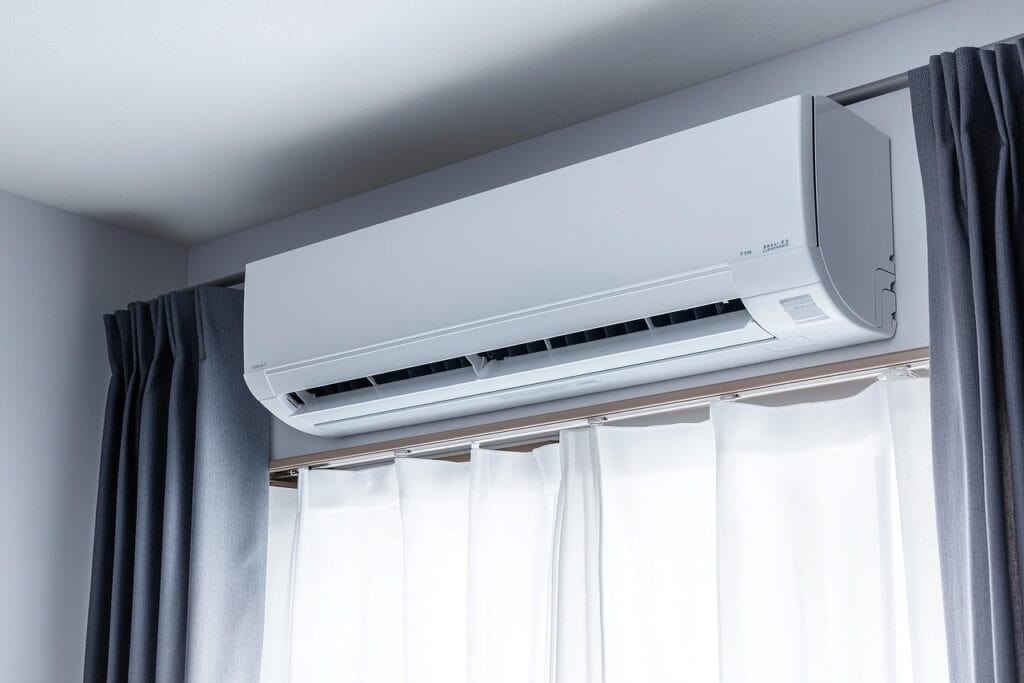Air conditioners with high efficiency can cut energy bills and keep indoor comfort steady during hot spells. Many buyers chase the highest SEER number without matching that figure to home needs, which leaves systems running hot and cold in the wrong way. This article lays out practical points to weigh before signing a purchase.
Efficiency Ratings Explained
Efficiency ratings like SEER and EER give a quick snapshot of how much cooling you get per unit of power, and they are often the first spec people look at. A higher SEER number usually means lower running costs over time, yet the jump from one rating to the next can carry a steep price tag up front.
Compare ratings alongside real-world metrics, such as seasonal performance and part-load behavior, to get a clearer sense of value. Think of the rating as a map, not the whole territory; it points you where to go but does not tell the whole story.
Right Size Your System

Sizing an air conditioner to your space matters more than chasing raw efficiency numbers, because a unit that is too large will cycle on and off and never run in its most efficient state. Load calculations, often called Manual J, factor in insulation, window area, occupant count, and local climate to arrive at a sensible capacity.
A correctly sized system will deliver steady comfort, better humidity control, and longer component life. If a salesperson gives a one-line estimate without measurements, push back and ask for a formal calculation.
Look For Variable-Speed Compressors
Variable-speed or inverter compressors change their output to match demand, which reduces frequent on-off cycles and saves energy during light-load periods. That smoother operation also tends to cut noise and improve indoor humidity control, making the home feel cooler at higher thermostat settings.
You will usually pay more at purchase, but operational savings and comfort gains often make the extra cost pay off over several seasons. In short, a variable-speed drive can make an already efficient unit even more practical for daily life.
Check Installation Quality
Even the best equipment will underperform if installed poorly, so the fitter’s skill and attention to detail are part of the purchase equation. Proper refrigerant charge, correct duct connections, and level placement of the outdoor unit all affect efficiency and longevity.
If you’re planning a replacement or upgrade, it’s wise to choose a trusted provider that specializes in the service of new air conditioning units to ensure everything runs at peak performance from day one.
Ask for references, check whether the installer follows local codes, and see if a performance test is included after setup. Good installation is like a clean handoff: it keeps problems at bay and lets the unit show what it can do.
Mind Ductwork And Airflow
Leaky, undersized, or poorly routed ductwork can sap efficiency faster than many other issues, because conditioned air escaping into an attic or crawlspace wastes both energy and comfort. Inspect ducts for gaps, torn insulation, and improper sealing, and verify that duct runs supply each living area with balanced airflow.
Sometimes modest repairs or rebalancing will boost comfort enough that a smaller equipment upgrade fits the bill. Think of ducts as the veins of the system: if they’re clogged or leaking, circulation suffers and the whole system works harder.
Weigh Long-Term Costs And Savings
The sticker price is one part of the financial picture; lifetime operating cost, maintenance, and likely repairs shape the full payback story. Estimate annual energy use with local cooling-degree data, factor in typical electricity rates, and run a simple payback calculation that stretches over five to fifteen years.
Keep in mind that rebates and tax credits can shave a meaningful slice off the initial expense, shifting the math in favor of higher efficiency. A dollar saved at the meter adds up over seasons, and good planning helps those dollars stick.
Pick The Right Refrigerant
Refrigerant type affects performance, environmental impact, and long-term serviceability, so look at the coolant the unit uses and whether local rules affect future availability. Newer refrigerants often have lower global-warming potential, which makes them a better pick if you plan to own the system long term.
Replacement or top-off options for older refrigerants can become scarce, which raises service costs down the line. Ask about the refrigerant charge procedure and what the maker recommends for service life.
Focus On Controls And Features
A modern thermostat and control suite can make a high-efficiency AC behave even smarter, with scheduling, remote access, and multi-stage settings that match daily routines. Features like demand response compatibility or adaptive recovery modes can further trim energy use in homes on variable-rate plans.
Balance the gadgetry you actually will use against extras that sound neat but add cost and complexity. Good controls let you get the most from a fine piece of equipment without turning every adjustment into a chore.
Investigate Warranties And Service
Warranty terms vary across components and often separate the compressor from other parts, so read the fine print and note any labor coverage limits. A longer parts warranty is comforting, but on-site service availability and the reputation of local technicians are equally important for real-world uptime.
Ask who handles warranty claims, how quickly service calls are typically answered, and whether routine maintenance plans are offered. A solid service network is the safety net that keeps a system in good nick season after season.
Apply For Rebates And Financing
Many utilities and local programs offer rebates for high-efficiency installations, and manufacturers sometimes add incentives that lower the effective price at the point of sale. Check local utility sites and speak with dealers about current offers, and compare the net cost after rebates to the gross sticker price.
If financing is needed, look for low-rate options that do not extend payments so long they erase the energy savings. A smart rebate claim can make a higher-efficiency choice suddenly feel like the sensible pick.
Test Performance And Plan Maintenance
After installation, a brief performance check that measures supply and return temps, static pressure, and refrigerant charge validates that the unit operates as promised. Arrange a simple maintenance routine that includes filter changes, coil cleaning, and seasonal tune-ups to keep efficiency where it should be.
Small, regular tasks prevent big fixes and keep the system worth its salt through heavy use. Think of maintenance as preventive care: a little attention now wards off costly headaches later.

